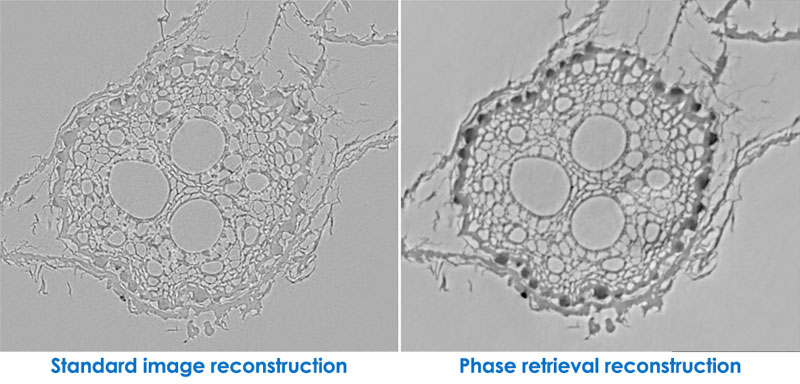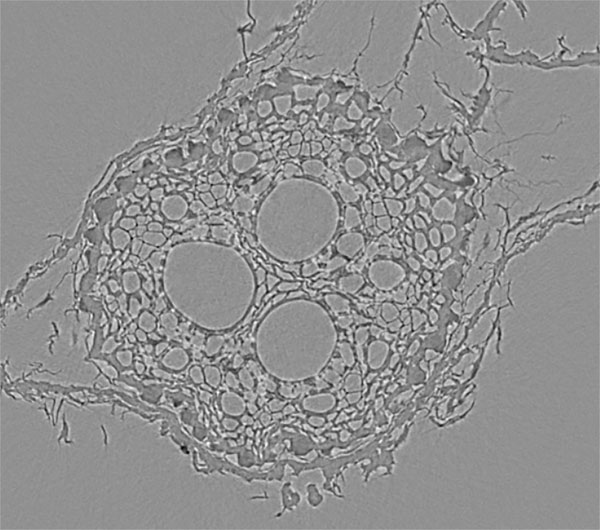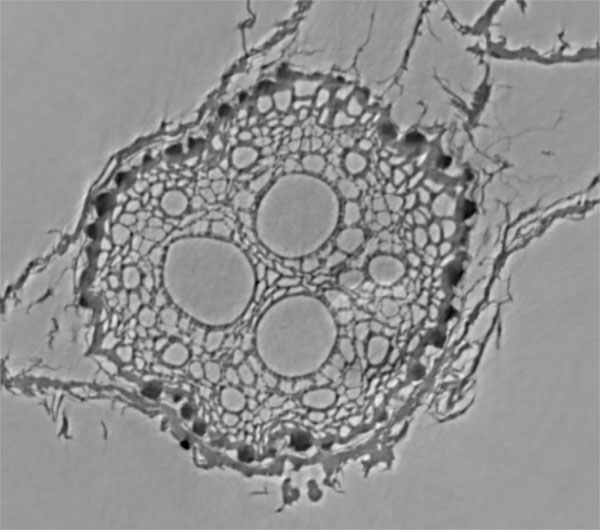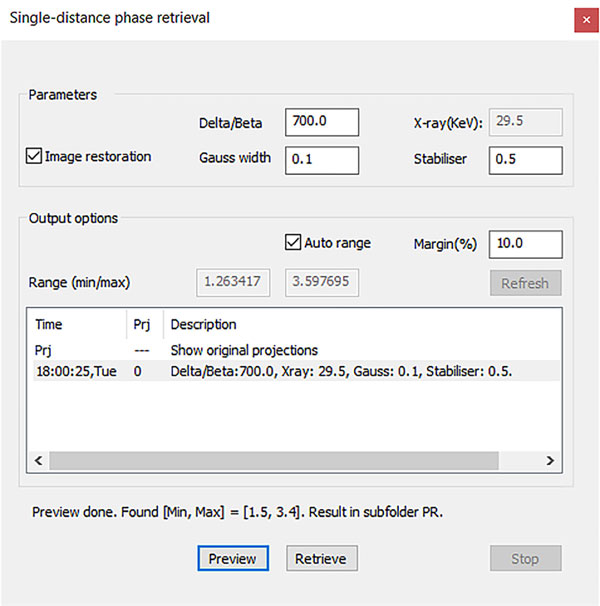Phase Retrieval Imaging with Bruker NRecon 2.0 Micro-CT Reconstruction Software
Phase retrieval imaging (phase contrast) is a new image processing feature in Bruker’s NRecon 2.0 micro-CT reconstruction software. It’s much simpler than with previously available plug-ins, for removing bright edges and enhancing contrast.
Blue Scientific is the official distributor for Bruker Micro-CT (also known as X-Ray Microscopy) in the UK, Norway, Sweden, Denmark, Finland and Iceland. For more information or quotes, please get in touch.
Bruker SkyScan Micro-CT range
More articles about micro-CT
Contact us on +44 (0)1223 422 269 or info@blue-scientific.com
Bruker SkyScan NRecon 2.0
A major new version of Bruker’s micro-CT reconstruction software is now available: NRecon – version 2.0. This features the world’s fastest micro-CT reconstruction, as well as many new new capabilities and enhancements including phase retrieval.
Phase Retrieval Imaging
A significant new feature is phase retrieval 3D reconstruction, an image processing technique:
- Eliminate “bright edges” caused by small angle scattering.
- Enhance contrast.
- Reveal details not clearly visible with standard imaging.
It requires only a single scan, and can even be applied to existing scans if the scan projection images are still available.

How it Works
The Paganin phase retrieval method is a phase contrast technique, which makes use of the phenomena of refraction and diffraction of X-rays at the internal boundaries of a sample. It’s equivalent to phase contrast imaging with visible light microscopes. The phase interactions of X-rays are smaller than those of visible light, but they’re significant enough to provide phase contrast information.
Phase contrast X-ray imaging can be quite a complex technique, requiring synchrotron radiation for monochromatic, coherent X-rays. Sometimes precise gratings are required, or multiple scans at different distances from the camera.
However, in micro-CT systems there’s a phase contrast phenomenon that occurs readily: small angle scattering. This happens even with polychromatic, non-coherent laboratory sources, and no gratings are required.
Eliminate Bright Edges (Small Angle Scattering)
In some micro-CT images there’s a bright “halo” around object boundaries in both the projection and the reconstructed images, caused by small angle scattering. This can be seen in the example below. The bright edges are a phase contrast phenomenon, caused by reflected X-rays that are incident at an object surface at a very shallow angle, smaller than one degree.

Enhanced Contrast
Phase retrieval enhances contrast and obtains structural information from the small angle scattered component. It requires only a single scan, and does not need multiple geometries or gratings.
Note that phase retrieval is not a CT reconstruction algorithm; it’s an image processing method that’s applied to individual 2D X-ray projection image in the micro- or nano-CT set.
Visualise Lost Details
The phase retrieval image of the same sorghum root is shown below. You can see how the edge brightening has been eliminated and contrast is enhanced. This visualises details that were lost in the standard scan, for example the high density layer of peripheral cells in the root.

How to use Phase Retrieval in NRecon 2.0
Phase retrieval imaging is a new feature in Bruker’s NRecon 2.0 micro-CT reconstruction software. It converts the full set of projections in a scan into phase-retrieved images.
It’s easier to use than plug-ins that were previously available, with many parameters input silently from the scan log file.
The critical parameter is the “delta/beta ratio” which relates to the strength of phase retrieval. Values are typically between 100 and 1000. A good starting point is between 400 and 700. Initially the other settings can be left at their default values.

When to use Phase Retrieval
High resolution scans with noticeable edge brightening are the most likely to benefit from phase retrieval. If in doubt, give it a try – it’s easy to apply with the new tools in NRecon 2.0.
Even existing scans can be reconstructed with phase retrieval, if the scan projection images are still available.
Method Note
Full details, including an overview of the theory and a step-by-step walk-through are available in Bruker’s method note “MN 133 Paganin single-distance phase retrieval reconstruction in NRecon”. This is available for customers via the Bruker Support portal.
More Information
Blue Scientific is the official distributor of Bruker Micro-CT in the UK and Nordic region. If you have any questions about their instruments or software, please get in touch:


